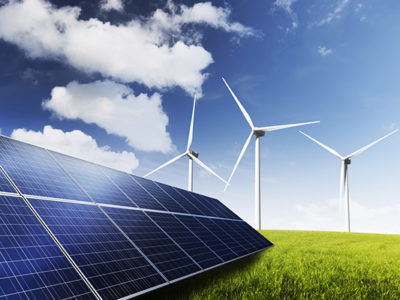Geoengineering: Ready for its Close-up?
After long being marginalized in climate debates, geoengineering is experiencing a surge in attention — which carries both opportunities and risks.
If you’re a long-time Legal Planet reader, you may have noticed that I weigh in once a year or so to say that geoengineering – active engineered response to global climate change – is going to get prominent, and intensely contentious, soon.
Geoengineering? Before continuing, we need a brief aside about names. Even what to call it is contested and shifting. In addition to geoengineering, people call it climate engineering, climate remediation, more recently climate intervention. They argue about whether it’s all one thing, or whether various methods and approaches are so different that they should have different names and not be discussed together. The names are certainly important for debate framing, and for shaping public and political response, but they don’t change the substantive issues and arguing over what to call this stuff has become tiresome. So for this post, I’m going to call it “Norma.” (If this confuses you, check the classic Billy Wilder film, “Sunset Boulevard.”)
Norma is intentional modification of the environment at large scale – large meaning continental to global – to reduce the climate change and other harms done by elevated atmospheric greenhouse gases. Norma comes in two main types, interventions that remove CO2 or other greenhouse-gases from the atmosphere (“Carbon dioxide removal” or CDR – for this post, “Removal Norma”), and interventions that change the energy balance of the Earth, mainly by scattering an additional percent or so of incoming sunlight to make the Earth a little brighter (“Solar geoengineering,” solar radiation management, solar radiation modification—for this post, “Solar Norma”). The most prominent form of Solar Norma would spray mists of reflective aerosols in the upper atmosphere, “stratospheric aerosol injection” (SAI). “Carbon” and “Solar” are not necessarily the only possible types of Norma. Others are occasionally proposed.
For 15 years or so, Norma has been argued over by small groups of scientists, climate-policy wonks, and activists, but has not received wide attention. This changed a few years ago for Removal Norma (CDR), which has gained a surge of attention and resources since 2015. The main trigger for this came from the emissions scenarios produced to show ways of meeting the Paris climate targets, limiting global-average heating to 1.5 to 2ºC. Most of these required hundreds of billions of tons (GtCO2) of Removal Norma by year 2100. Solar Norma might be much more effective than Removal Norma at limiting climate risks – and act much faster – but has enjoyed no such rise in attention or respectability. On the contrary, Solar Norma has faced starkly inadequate research funding, determined opposition to even innocuous proposals for small-scale field research, marginalized and biased treatment in official assessments, and exclusion from climate scenarios. The widespread reluctance to study or research it, even to better characterize potential risks and limitations, has been widely likened to a religious ban on study or discussion of heretical doctrine.
Until now, that is. Over the past couple of months, Solar Norma is everywhere. Research funding has started to flow (although still far short of need), and research communities not formerly involved are starting to pay attention. Stories about it are appearing every week in prominent, respected publication outlets. Research and policy organizations are staffing up. It finally hit me yesterday that this change is real, when within a two-hour period both my teenaged sons sent me a link to a new video on Norma their favorite cool-science-explained Youtube channel. (BTW, the treatment of Norma in this video is excellent – it covers all the major issues accurately and clearly, and is even-handed about the scariness, the known problems and risks, and the reasons Norma still needs to be studied and considered despite these.)
So why is this happening now? Is it a good or a bad thing? And does it suggest that other things about the debate over Norma have changed?
One possible answer to the “why now” question is that it was bound to happen eventually, and that it’s happening now is just a random event. The familiar argument for increased research and governance attention to Solar Norma remains valid, indeed grows stronger as time passes:
- Climate-change risks are severe, getting worse, and slow to deflect: climate change is a train-wreck in slow-motion;
- Deep cuts to the emissions that are driving the changes, moving the world economy to non-carbon energy sources, is the first-priority response, essential to limiting risks;
- But we’ve known this for 30 years, during which world emissions kept increasing except for a few flat years. With a few small exceptions, emissions-cutting efforts have thus far achieved little;
- At this point, even an extreme effort on emissions-cuts might not adequately limit risks, given the late start and the uncertainties about the rate and impacts of climate change;
- Removal Norma will probably help a lot, but will take decades to grow to the assumed Gt scale – and is not confidently known to work, with acceptable impacts, at that scale. So by all means pursue it, hard, but don’t bet the farm on it.
- Solar Norma appears able to make bigger, faster changes to limit climate risks – so while it presents many scary risks and hard problems of governance and control (real problems, but potentially remediable), it may be a necessary part of an effective climate risk-limitation strategy, offering risk-reduction opportunities not available in other ways;
- And finally, the foregoing is not a secret. So no matter how much you may hate or fear Solar Norma, you can’t guarantee that some government(s) facing severe climate impacts won’t try to use it. This strengthens the case for understanding how it would work, what risks it would pose, and how to govern it, even if the endpoint is to reject it.
With this all old news, the reason for the sudden spike in attention now could simply be that understanding of this tough situation has percolated to enough people to pass some critical scale. And like any issue dominated by conformity and fear of speaking out, the first little crack in the wall of silence leads quickly to the dam bursting. (Mix, mix, mix those metaphors!)
But my guess is that there is more going on. The politics and public awareness of climate change are undergoing a broader transformation. The volume of alarming news about changes and impacts already occurring, the shifts in public opinion and elevation of alarm, have greatly strengthened the case for – and raised the likelihood of – serious action to cut emissions. The multiple announcements of new emissions commitments – notably China’s recent adoption of a net-zero target by 2060 – have further strengthened the sense of possibility on this front, as has the prospect of a new US administration that would take strong climate action seriously.
I speculate that all this movement toward getting serious about emissions cuts – at last! – opens a window for a serious conversation about Norma, including Solar Norma. Even a cursory examination of the extreme need for emissions cuts, and the heavy lift involved in achieving them, has to raise the question of how much can be achieved, how fast – and the severity of remaining climate risks even under the most optimistic assumptions about the ambition and effectiveness of mitigation. This line of reasoning naturally directs inquiry to other, potentially additional approaches like Norma. Moreover, the strongest objection to thinking about Norma has been the risk that Norma may distract from, or undermine support for, the needed deep emission cuts. This argument becomes less persuasive as public alarm about climate change and support for emission-cutting policies grow stronger. So Norma may really be ready for its close-up.
Whether my speculation about the cause of the current surge of attention to Norma is right or wrong, the existence of the surge is undeniable. So what happens now? What is likely to happen, and what should happen?
Part of the answer is obvious, and unchanged by the current surge of attention. The first need is for a large expansion of research into alternative methods, how they would work, and what impacts and risks they would carry. Equally essential is starting the conversation about how to research, develop, and control these technologies, how to assess and limit their risks, how to fit them into an effective overall climate response strategy. Most importantly, how can it be ensured that the development of Norma does not impair, but rather strengthens, support for the other essential elements of such a strategy, especially deep rapid cuts in world emissions. The severity and novelty of Solar Norma’s governance challenges cannot be over-stated, and if its use is ever to be considered it must be with confidence that this can happen competently, prudently, and legitimately. Whatever use is made of Solar Norma, if any, must advance – and on all accounts not impair – effective overall management of climate risks and global cooperation, development, and justice. This will be a tall order for currently weakened international governance capacity, and the exploration of how to achieve it needs to start immediately.
This emergence of Solar Norma as something that can be discussed in decent company is not without risks. Indeed, many of these risks are closely related to the concerns long expressed about Solar Norma, but the rise in attention means these previously hypothetical risks are becoming real. I’ll discuss these in future posts, including ways that some recent pathologies in debates about COVID and its responses illustrate ways things could go badly wrong with more active consideration of Solar Norma.
Reader Comments
2 Replies to “Geoengineering: Ready for its Close-up?”
Comments are closed.








Not one mention of the source of this funding, fossil fuel companies or government fund at the lobbying behest of the fossil fuel industry. An exploration of the funding might suggest the funding is a defensive strategy to justify maintaining fossil fuel infrastructure.
Hi Alan — This is a completely reasonable concern about expanded research, and one that has been regularly raised about research in both removal and solar interventions. But it appears to apply only weakly to recently announced research activities. Silver Lining publishes their sources of support, and it’s individuals and foundations from tech, finance, and other industries, with no evident connection to fossil money. The politics underlying US federal research funding are only imperfectly observable, but recent and proposed increases to NOAA fit well into their long-standing programs on atmospheric aerosols. DOE funding for carbon dioxide removal is more clearly complementary with fossil-sector interests, of course. And the strongest evidence in support of your concern is the private investment deals that are proliferating between fossil producers and CDR startups. Not that getting oil majors developing CDR technology is necessarily a bad thing, but if they’re linking removals to enhanced recovery then great care (and 3rd-party control) is needed regarding emissions accounting and life-cycle analysis, to ensure claimed net removals are real. Regarding the bigger, long-standing concern that fossil producers or their proxies will be enthusiastic promoters of solar interventions and will exaggerate their efficacy and safety to claim we don’t need aggressive emissions cuts — this is long expected, but there’s no sign of it thus far.